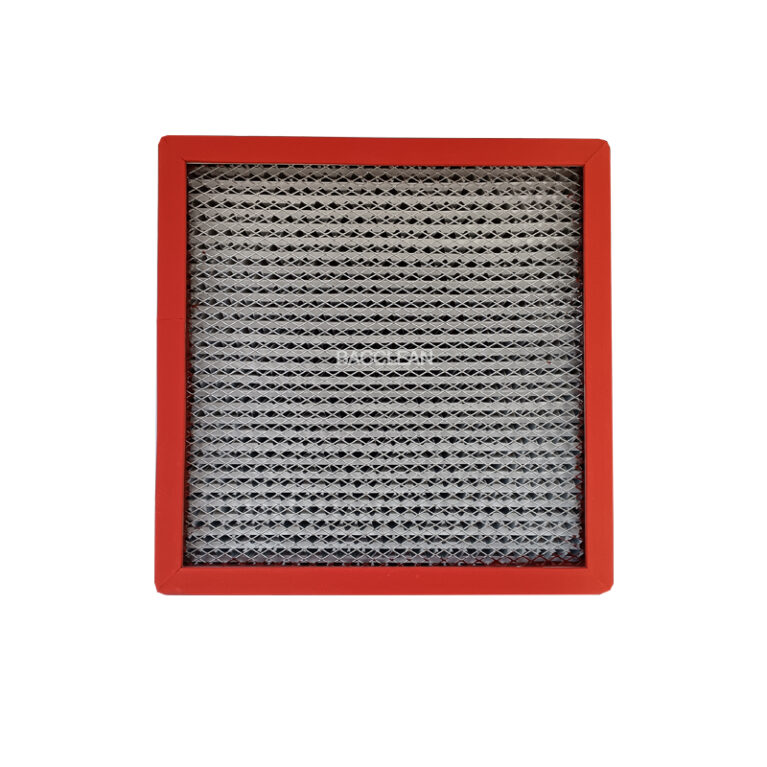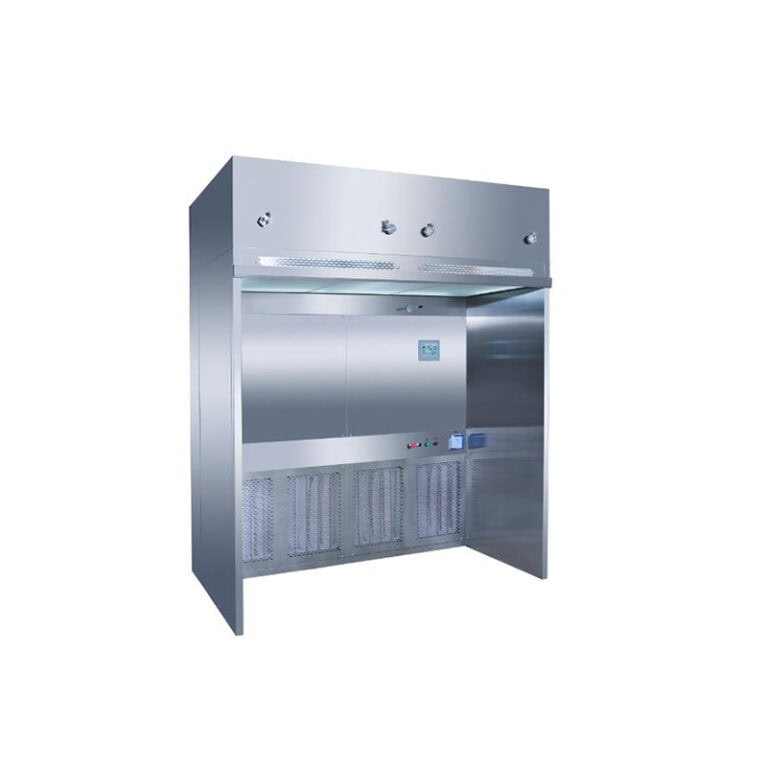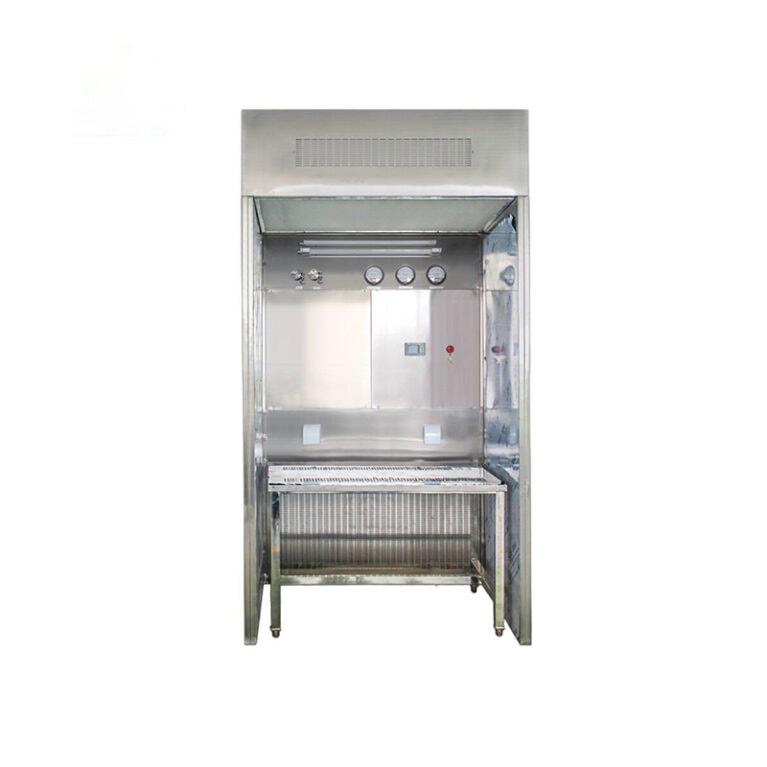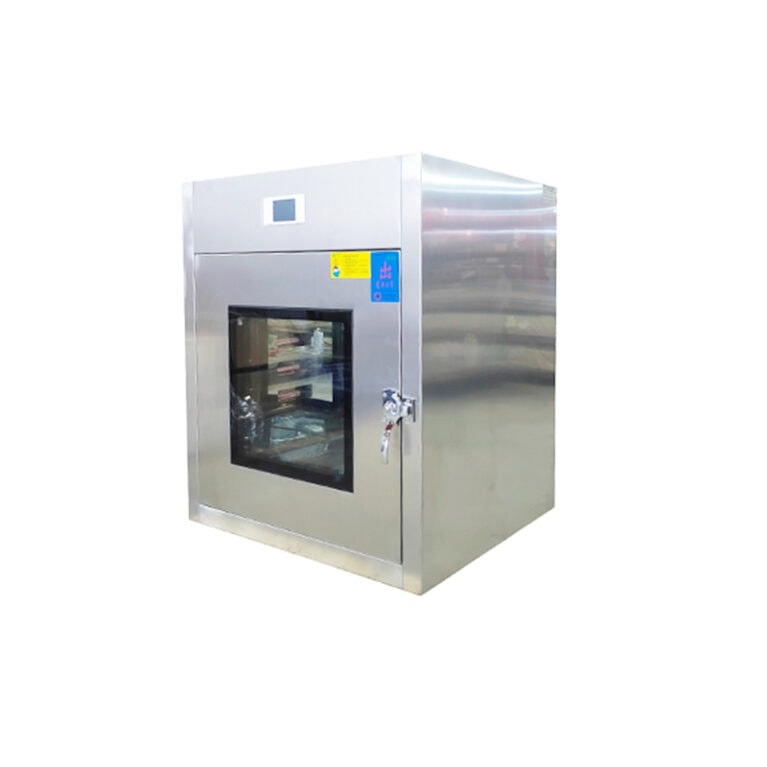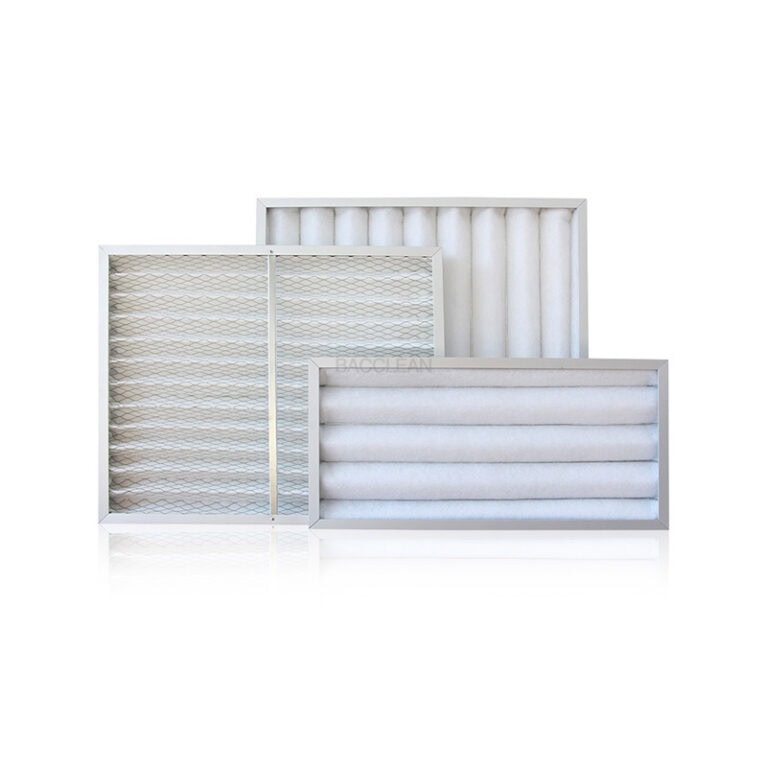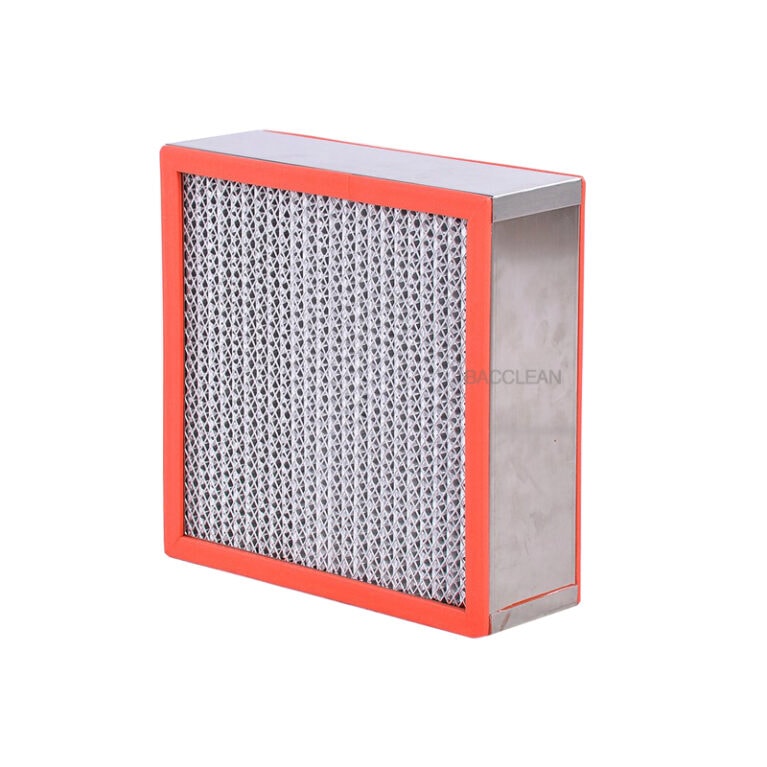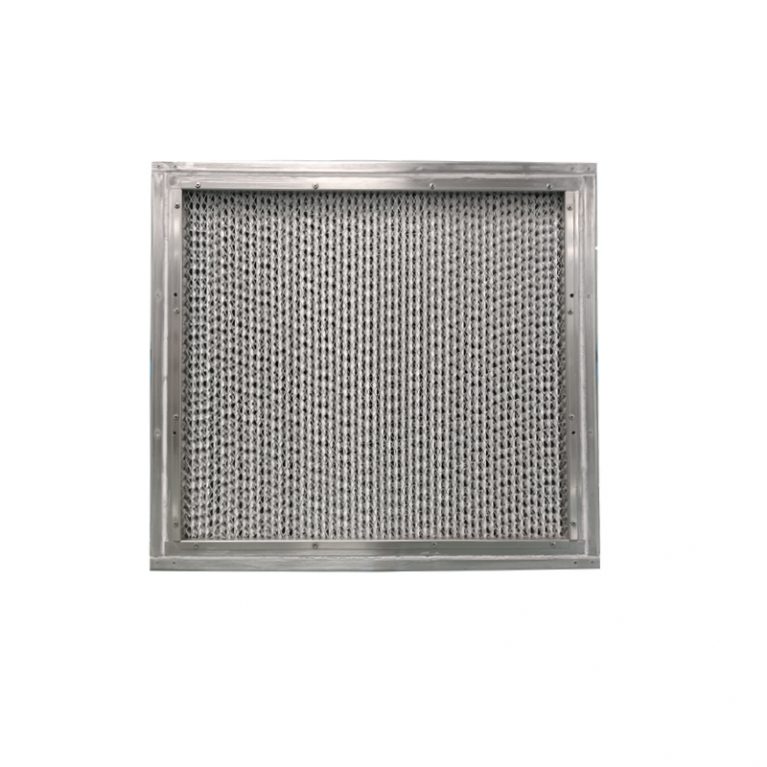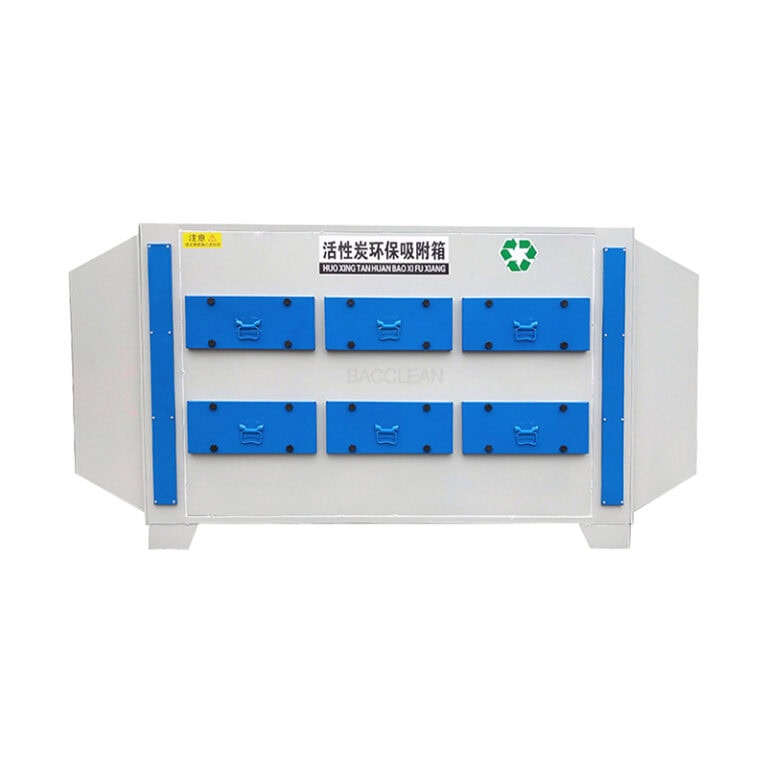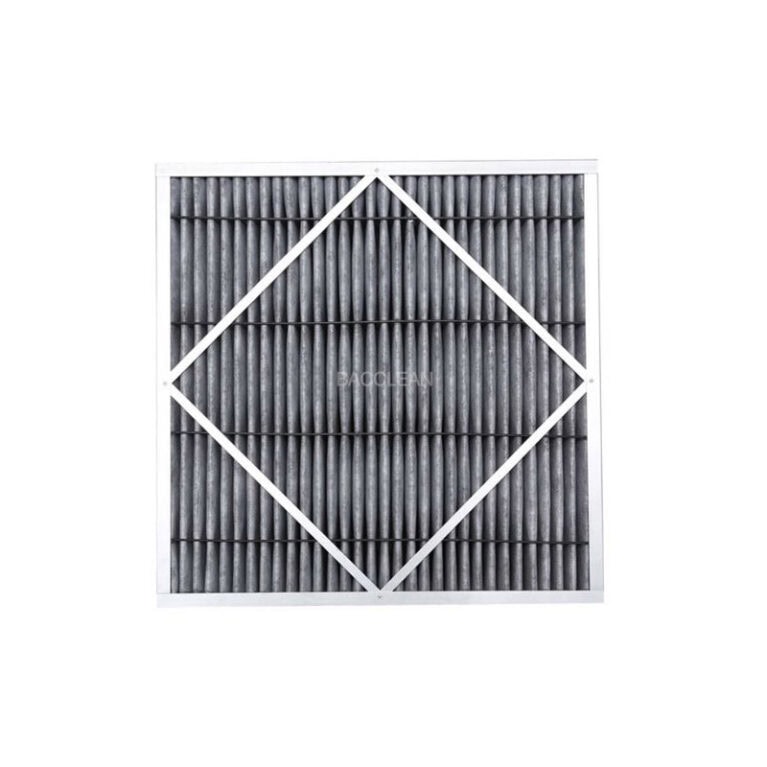To extend the service life of plastic frame combined air filters, efforts should be made to reduce the load on the filter material, protect the frame and the filter material, and optimize the operating environment. Targeted measures should be taken in combination with the material characteristics and filtration principles. The specific methods are as follows:
I. Reducing the Dust Accumulation Rate of Filter Materials (Core Idea)
The dust-holding capacity of filter materials is limited. Reducing the total amount of pollutants entering the filter can directly extend its service life.
Add a pre-filter
Before the plastic frame combined filter (usually medium or sub-high efficiency), a primary filter (such as nylon mesh or non-woven fabric filter) is installed to intercept large particle dust (≥5μm) first, reducing the burden on the filter material of the main filter.
In an air conditioning system, the primary filter can filter out over 80% of large particles, extending the lifespan of the subsequent medium-efficiency filter by 30% to 50%.
Control the concentration of intake air pollution
Optimize the outdoor air intake: Keep it away from pollution sources such as construction sites, roads, and factories. If necessary, install windshields or dust covers to reduce the direct inhalation of outdoor dust.
Improve indoor environment: In workshops, warehouses and other places, reduce the dust content in indoor air by means of sprinkling water to suppress dust and sealing dust sources (such as installing equipment protective covers).
Ii. Protect the structure of the filter and the filter material
The integrity of plastic frames and filter materials is the foundation for ensuring filtration efficiency and service life. Physical damage or performance degradation should be avoided.
Install and maintain the frame correctly
When installing, avoid squeezing the plastic frame forcefully (especially those made of PP and PVC, which tend to become brittle at low temperatures). Ensure that the frame fits tightly with the installation frame without deformation or gaps (gaps can cause short circuits in unfiltered air, accelerating local filter material contamination).
Regularly inspect the sealing rubber strips of the plastic frame: If aging or detachment is found, replace the rubber strips in time (silicone rubber strips can be used as a substitute, which have stronger aging resistance) to prevent air leakage and local overload of the filter material.
Avoid the filter material from getting damp or corroded
Control environmental humidity: For ABS and PVC materials, it is necessary to avoid long-term exposure to high humidity (> 85%) environments to prevent the frame from getting moldy or the filter material (such as paper filter material) from getting damp and clogged. If it is a high-humidity scene, it is recommended to use a PP material filter + waterproof filter material (such as polyester fiber).
Stay away from corrosive gases: In scenarios such as chemical engineering and laboratories, it is necessary to ensure that the plastic frame material is compatible with the environment (for example, PP is resistant to acids and alkalis, while ABS is not resistant to strong solvents), to prevent the frame from being corroded and deformed, and indirectly protect the filter material.
Iii. Optimize system operation parameters
Reasonable control of the operating status of the ventilation system can reduce unnecessary loss of filter materials.
التحكم في سرعة الرياح وحجم الهواء
Avoid operating beyond the rated air volume of the filter: Excessively high air velocity will intensify the impact of dust on the filter material, leading to premature damage of the filter material or uneven dust accumulation (the areas with higher air velocity at the edges will be clogged first). It is recommended to stabilize the actual air volume within ±10% of the rated air volume through frequency conversion regulation of the fan.
Regularly clean the fan and pipes: Dust accumulation on the fan impeller or debris in the pipes can cause airflow disorder, increase local resistance of the filter, and accelerate the aging of the filter material. It is necessary to clean them every 3 to 6 months.
Regularly inspect and clean the surface dust
For washable primary/medium efficiency plastic frame filters (if the filter material is non-woven fabric or nylon mesh), before the resistance reaches the final resistance, the floating dust can be blown from the back of the filter material in the reverse direction with compressed air (pressure ≤0.3MPa), or gently rinsed with clean water (with neutral detergent) (be careful not to damage the filter material). After drying, they can be reused (this can be repeated 1-3 times) It depends on the wear and tear of the filter material.
4. Targeted maintenance of frames made of different materials
According to the characteristics of the plastic frame material, differentiated protection measures are adopted:
ABS frame: Avoid contact with organic solvents (such as alcohol, gasoline) to prevent surface cracking. In high-temperature environments (> 60℃), enhanced ventilation and heat dissipation are necessary to prevent the frame from softening and deforming.
PP frame: Avoid violent impacts in low-temperature environments (< 0℃) to prevent brittleness and fracture. When cleaning, the water temperature should not exceed 60℃ to prevent the material from shrinking.
PVC frame: Avoid direct sunlight or long-term exposure to an environment above 40℃ to prevent aging and brittleness. Try to minimize the usage time in a high-humidity environment.
الملخص
The core to extending the service life of plastic frame combined air filters lies in “load reduction + protection” : reducing the load on the filter material through pre-filtration and pollution control, protecting the frame and filter material through correct installation, environmental control and material maintenance, and optimizing the system operation parameters at the same time. These measures can extend the service life of the filter by 20% to 60%, reducing the replacement cost while ensuring the stability of the filtration effect.
I. Reducing the Dust Accumulation Rate of Filter Materials (Core Idea)
The dust-holding capacity of filter materials is limited. Reducing the total amount of pollutants entering the filter can directly extend its service life.
Add a pre-filter
Before the plastic frame combined filter (usually medium or sub-high efficiency), a primary filter (such as nylon mesh or non-woven fabric filter) is installed to intercept large particle dust (≥5μm) first, reducing the burden on the filter material of the main filter.
In an air conditioning system, the primary filter can filter out over 80% of large particles, extending the lifespan of the subsequent medium-efficiency filter by 30% to 50%.
Control the concentration of intake air pollution
Optimize the outdoor air intake: Keep it away from pollution sources such as construction sites, roads, and factories. If necessary, install windshields or dust covers to reduce the direct inhalation of outdoor dust.
Improve indoor environment: In workshops, warehouses and other places, reduce the dust content in indoor air by means of sprinkling water to suppress dust and sealing dust sources (such as installing equipment protective covers).
Ii. Protect the structure of the filter and the filter material
The integrity of plastic frames and filter materials is the foundation for ensuring filtration efficiency and service life. Physical damage or performance degradation should be avoided.
Install and maintain the frame correctly
When installing, avoid squeezing the plastic frame forcefully (especially those made of PP and PVC, which tend to become brittle at low temperatures). Ensure that the frame fits tightly with the installation frame without deformation or gaps (gaps can cause short circuits in unfiltered air, accelerating local filter material contamination).
Regularly inspect the sealing rubber strips of the plastic frame: If aging or detachment is found, replace the rubber strips in time (silicone rubber strips can be used as a substitute, which have stronger aging resistance) to prevent air leakage and local overload of the filter material.
Avoid the filter material from getting damp or corroded
Control environmental humidity: For ABS and PVC materials, it is necessary to avoid long-term exposure to high humidity (> 85%) environments to prevent the frame from getting moldy or the filter material (such as paper filter material) from getting damp and clogged. If it is a high-humidity scene, it is recommended to use a PP material filter + waterproof filter material (such as polyester fiber).
Stay away from corrosive gases: In scenarios such as chemical engineering and laboratories, it is necessary to ensure that the plastic frame material is compatible with the environment (for example, PP is resistant to acids and alkalis, while ABS is not resistant to strong solvents), to prevent the frame from being corroded and deformed, and indirectly protect the filter material.
Iii. Optimize system operation parameters
Reasonable control of the operating status of the ventilation system can reduce unnecessary loss of filter materials.
التحكم في سرعة الرياح وحجم الهواء
Avoid operating beyond the rated air volume of the filter: Excessively high air velocity will intensify the impact of dust on the filter material, leading to premature damage of the filter material or uneven dust accumulation (the areas with higher air velocity at the edges will be clogged first). It is recommended to stabilize the actual air volume within ±10% of the rated air volume through frequency conversion regulation of the fan.
Regularly clean the fan and pipes: Dust accumulation on the fan impeller or debris in the pipes can cause airflow disorder, increase local resistance of the filter, and accelerate the aging of the filter material. It is necessary to clean them every 3 to 6 months.
Regularly inspect and clean the surface dust
For washable primary/medium efficiency plastic frame filters (if the filter material is non-woven fabric or nylon mesh), before the resistance reaches the final resistance, the floating dust can be blown from the back of the filter material in the reverse direction with compressed air (pressure ≤0.3MPa), or gently rinsed with clean water (with neutral detergent) (be careful not to damage the filter material). After drying, they can be reused (this can be repeated 1-3 times) It depends on the wear and tear of the filter material.
4. Targeted maintenance of frames made of different materials
According to the characteristics of the plastic frame material, differentiated protection measures are adopted:
ABS frame: Avoid contact with organic solvents (such as alcohol, gasoline) to prevent surface cracking. In high-temperature environments (> 60℃), enhanced ventilation and heat dissipation are necessary to prevent the frame from softening and deforming.
PP frame: Avoid violent impacts in low-temperature environments (< 0℃) to prevent brittleness and fracture. When cleaning, the water temperature should not exceed 60℃ to prevent the material from shrinking.
PVC frame: Avoid direct sunlight or long-term exposure to an environment above 40℃ to prevent aging and brittleness. Try to minimize the usage time in a high-humidity environment.
الملخص
The core to extending the service life of plastic frame combined air filters lies in “load reduction + protection” : reducing the load on the filter material through pre-filtration and pollution control, protecting the frame and filter material through correct installation, environmental control and material maintenance, and optimizing the system operation parameters at the same time. These measures can extend the service life of the filter by 20% to 60%, reducing the replacement cost while ensuring the stability of the filtration effect.

